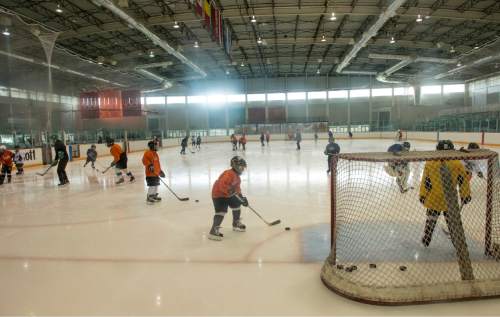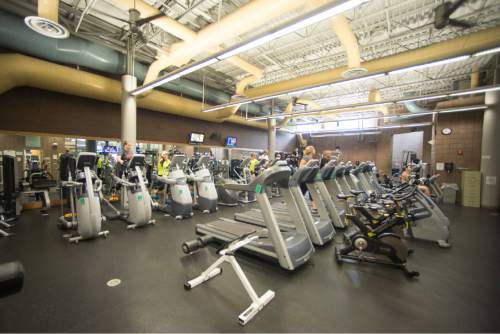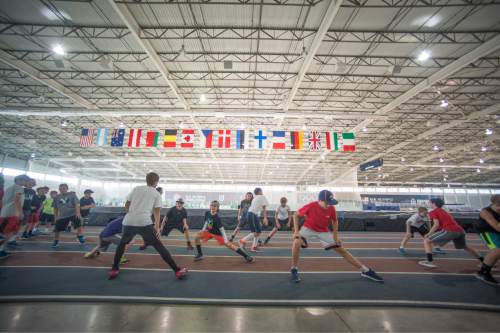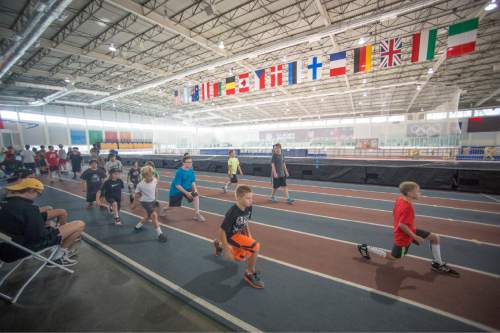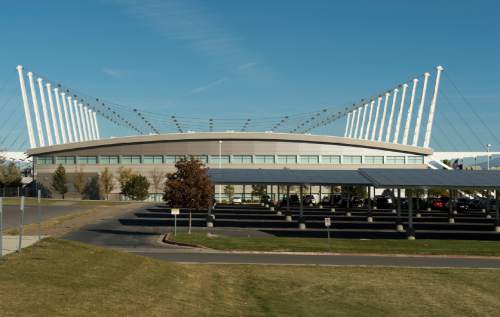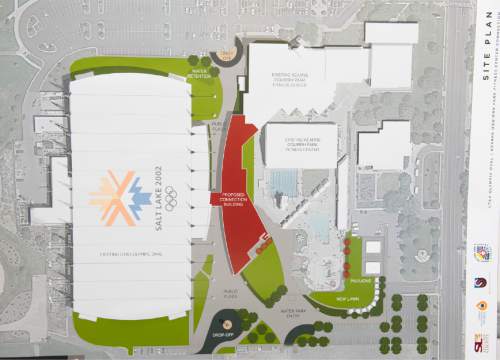This is an archived article that was published on sltrib.com in 2015, and information in the article may be outdated. It is provided only for personal research purposes and may not be reprinted.
The future center of Kearns is likely to revolve around the community's Olympic legacy.
In concert with the Kearns Oquirrh Park Fitness Center and U.S. Speedskating, the Utah Olympic Legacy Foundation is embarking on a $10 million project to connect its speedskating oval to the recreation district's swimming pool with a two-story building that could provide office space for all three organizations and sports-medicine facilities for use by elite athletes from many Olympic sports.
This "campus" also could provide meeting spaces for the community, including the council that will oversee the area after a Nov. 3 Community Preservation election determines if Kearns becomes a metro township or a city.
"Our interest is to build on a good thing and further [expand] our benefits to the broader community," Olympic Legacy Foundation CEO Colin Hilton told the County Council recently, noting the Legislature has invested $3 million in the project. "We have something special here."
County Mayor Ben McAdams agreed. "What Colin is doing is a start," he said, "but we're not going to stop there."
McAdams noted that the county has launched an initiative to help improve the quality of life in Kearns, which statistically has problems.
County data show that Kearns residents have the longest commutes to work of any county residents, he said, and some of the worst access to mass transit. The infant mortality rate in Kearns is 86 percent higher than the county average; life expectancy is five years shorter; and diabetes, obesity, smoking and teen birthrates all exceed county averages.
Until a year ago, the community supported only 600 jobs. That's starting to change, said county Township Services Executive Director Patrick Leary, noting that Linguistica International recently decided to open a facility in Kearns, providing employment to 125 interpreters.
Leary's office also took a lead role in securing a grant from the Wasatch Front Regional Council to prepare a "small area plan" to capitalize on the Olympic Oval's economic-development potential. That plan is being prepared by GSBS Architects, the firm that designed the oval for the 2002 Winter Olympics, where it established its reputation as the world's fastest ice.
This kind of big-picture analysis is needed, McAdams said, noting that he often takes his family to activities at the oval but then finds it hard to find a restaurant close by to eat afterward.
"If we can bring jobs to Kearns, places to eat, it would mean people would have more time with their families and more discretionary income," he said. "There's such untapped potential. We could create a town center for Kearns that would be a draw, harnessing the great things out there already."
Brent Sheets is director of the Oquirrh Recreation and Parks District, which was formed in 1962 and now operates indoor and outdoor swimming pools, tennis courts, a gymnasium, dance and aerobics facilities, a splash pad, an 8-mile hiking trail and a fitness center.
Link these directly with what the oval has to offer, Sheets said, "and the campus we're talking about is better than any park and recreation complex I've seen."
U.S. Speedskating Executive Director Ted Morris said the interconnecting building would provide much-needed additional space for his athletes.
"Our men and women share a locker room right now, which is a bit of an issue," he quipped, turning more serious in describing how the U.S. Olympic Committee has expressed interest in developing a nutritional center at the oval, along with sports-medicine and rehabilitation facilities.
"So much of sport is not what happens on the field of play, but preparing for it — strength and conditioning, rehabilitation and recovery," he said. "This plan changes everything … creating an environment where athletes can be inspired daily to train for excellence."
Morris said he anticipates the National Speedskating Museum and Hall of Fame could be persuaded to move from Milwaukee to an expanded facility in Kearns, making it a tourist draw.
County Councilman Michael Jensen praised Hilton and his partners for what they have accomplished in Kearns, recalling how there were some tenuous days for the facility right after the Olympics.
"This will shape Kearns. It will be the core of Kearns," he said. "Whatever we [the County Council] can do to help, I'm in."
Somewhat sheepishly, Councilman Jim Bradley added his accolades as well. Twenty years ago, he acknowledged, he had been a naysayer about the Olympics and the oval.
"I was dead wrong on both," Bradley said. "This has turned out to be a beautiful facility, very well run. The plan you have here today only enhances that. I'm glad you shot me down" back then.


